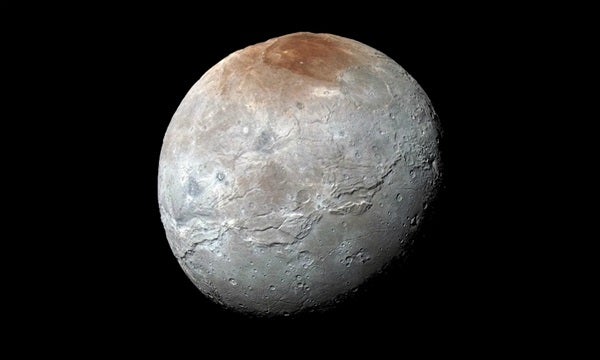Until now, it was thought that the cracks were the result of geodynamical processes, such as plate tectonics, but the models run by Alice Quillen and her collaborators suggest that a close encounter with another body might have been the cause.
Astronomers have long known that the craters visible on moons were caused by the impact of other bodies billions of years ago. But for every crash and graze, there would have been many more close encounters. By devising and running a new computer model, Quillen from Rochester has now shown that the tidal pull exerted by another similar object could be strong enough to crack the surface of such icy moons. Quillen also thinks that, “It might even offer a possible explanation for the crack on Mars, but that’s much harder to model.”
Icy moons exhibit what is known as brittle elastic behavior, which Quillen said most resembles “silly putty.”
“If you take silly putty and throw it on the floor it bounces – that’s the elastic part,” said Quillen. “But if you pull on it rapidly and hard enough, it breaks apart.”
To simulate the behavior, Quillen modeled the icy moons as if their interior was made up of many bodies connected by springs — an N-body problem with springs. While N-body problems are often used to understand the effect of gravity on planets and stars, N-body problems had never been used to model the inside of an astronomical body, in this case the moons. Other models for icy moons used what are known as “rubble pile models.”
“I jumped at the opportunity to consider a novel alternative to plate tectonics, the governing theory to explain earthquakes, volcanoes, and moving plates on Earth,” said Ebinger. “My role was to provide some checks and balances to Alice’s modeling and the choice of model parameters.”
In the paper, Quillen states that “strong tidal encounters” may be responsible for the cracks on icy moons such as Charon, Saturn’s Dione and Tethys, and Uranus’ Ariel.
The key factor in determining if a crack is going to occur is the strain rate, the rate of pull from another body that would have caused the moons to deform at a rate that the top icy layer could not sustain — leading to cracks.










